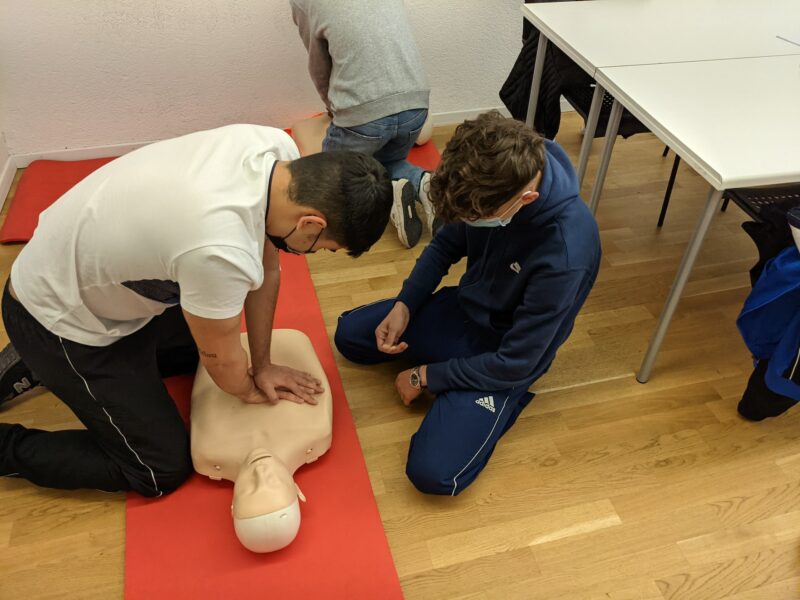Asphyxiation is a type of suffocation that occurs when someone is unable to breathe due to a lack of oxygen. Suffocation specifically refers to the obstruction of airflow, which can prevent oxygen from reaching the lungs
What is suffocation?
(Image by un-perfekt from Pixabay )

Suffocation is a medical emergency that occurs when a person is unable to breathe, or when the body does not receive enough oxygen. This can happen when the airway is blocked by an object or when the person is in an environment with low oxygen levels. Suffocation can lead to serious injury or death if not treated promptly. Common causes of suffocation include choking, drowning, smothering, carbon monoxide poisoning, and other respiratory emergencies.
What is Asphyxiation?
(Image by Tumisu from Pixabay )

Asphyxiation is a medical condition that occurs when the body is deprived of oxygen, leading to a lack of oxygen in the tissues and organs. This can happen when the airway is blocked or when the person is in an environment with low oxygen levels, such as in a confined space or high altitude. Asphyxiation can result in serious injury or death if not treated promptly. Common causes of asphyxiation include choking, drowning, suffocation, carbon monoxide poisoning, and other respiratory emergencies.
Asphyxiation and Suffocation how they differ?
Asphyxiation and suffocation are both life-threatening conditions that can occur when someone is unable to breathe. Both asphyxiation and suffocation can cause unconsciousness and death.
Asphyxiation occurs when there is a lack of oxygen in the air that someone is breathing. This can happen if the air is very thin, such as at high altitudes, or if there is a gas or other substance that displaces oxygen in the air, such as carbon monoxide.
Suffocation is a type of asphyxiation. Suffocation occurs when someone is unable to inhale enough air to breathe properly. Which causes the lack of oxygen in the body. This can happen if the person’s airway is blocked, such as by an object, or if they are unable to move their chest to breathe properly, such as during a heart attack. Suffocation can also occur due to a failure of the respiratory system, such as when someone is drowning.
If you are with someone who appears to be asphyxiating or suffocating, it is important to call 911 immediately and provide CPR if possible.
Is drowning asphyxiation or suffocation?
Drowning is a type of asphyxiation. When you drown, water enters your lungs and blocks your airway, preventing you from getting the oxygen your body needs. However, it’s worth noting that not all asphyxiations are fatal. If the blockage is removed in time, the person will usually recover without any lasting effects.
Suffocation, on the other hand, is always fatal if not treated immediately. When you suffocate, your body isn’t getting the oxygen it needs to function. This can happen due to several different factors, such as being trapped in an airtight space or being exposed to poisonous gas.
What is the difference between suffocation and choking?
- Suffocation and choking are similar in that they both involve a person being unable to breathe properly, but there is a subtle difference between the two terms:
- Suffocation: This occurs when a person is unable to breathe due to lack of oxygen in the air, which can be caused by smothering, drowning, or other respiratory emergencies.
- Choking: This occurs when a person’s airway is partially or completely blocked by an object, such as food or a foreign body.
In other words, suffocation refers to a lack of oxygen in the air or an environment that makes it difficult to breathe, while choking specifically refers to a physical obstruction of the airway. Both suffocation and choking can be life-threatening and require prompt medical attention.
Is asphyxiation the same as strangulation?
Asphyxiation and strangulation are related but distinct terms:
Asphyxiation refers to a condition in which the body is deprived of oxygen, leading to a lack of oxygen in the tissues and organs. Asphyxiation can be caused by a variety of factors, such as suffocation, drowning, or exposure to low oxygen levels.
Strangulation is a specific form of asphyxiation in which the flow of air or blood to the brain is restricted by external pressure applied to the neck. Strangulation can be intentional or unintentional, and it can be caused by hands, ligatures, or other objects.
In other words, all strangulation cases involve asphyxiation, but not all cases of asphyxiation involve strangulation. Strangulation can be a very serious and potentially life-threatening condition, and it requires immediate medical attention.
How do you identify suffocation?
Suffocation can be identified by the following signs and symptoms:
- Difficulty breathing or shortness of breath
- Rapid breathing or gasping for air
- Wheezing or coughing
- Feeling lightheaded or dizzy
- Blue or purple skin, especially around the lips and fingertips
- Confusion or disorientation
- Loss of consciousness
Suffocation can be caused by a variety of factors, including choking, drowning, smothering, or exposure to low oxygen levels. If you suspect that someone is suffocating, it’s important to seek immediate medical attention. Call your local emergency number or go to the nearest emergency room right away. While waiting for medical help, try to remove any objects or obstructions from the person’s airway, and perform basic first aid techniques such as rescue breathing or CPR if necessary.
What happens during suffocation?
During suffocation, the body is unable to take in enough oxygen to meet its needs. When the body is deprived of oxygen, the cells and tissues can begin to suffer damage and may eventually die. Suffocation can be caused by a variety of factors, including choking, drowning, smothering, or exposure to low oxygen levels.
When a person is suffocating, they may experience a range of symptoms, including difficulty breathing, rapid breathing or gasping for air, wheezing or coughing, feeling lightheaded or dizzy, blue or purple skin, especially around the lips and fingertips, confusion or disorientation, and loss of consciousness. These symptoms can vary depending on the cause and severity of the suffocation.
If left untreated, suffocation can lead to serious complications, including brain damage, heart failure, or death. It’s important to seek immediate medical attention if you or someone you know is experiencing symptoms of suffocation.
Which organ of the body is affected by asphyxia?
Asphyxia is a condition in which the body is deprived of oxygen, which can lead to damage or dysfunction of multiple organs in the body. The organs that are most commonly affected by asphyxia include:
Brain: The brain is highly sensitive to a lack of oxygen, and can suffer irreparable damage after just a few minutes of oxygen deprivation. Asphyxia can lead to brain damage, cognitive impairment, seizures, and in severe cases, coma or death.
Heart: The heart relies on a steady supply of oxygen to function properly. Asphyxia can cause the heart to beat irregularly, slow down, or stop altogether, leading to cardiac arrest and other serious complications.
Lungs: The lungs are responsible for bringing oxygen into the body and removing carbon dioxide. Asphyxia can cause the lungs to stop functioning properly, leading to respiratory failure and other complications.
Liver and kidneys: These organs rely on oxygen to perform their essential functions. Asphyxia can cause liver and kidney failure, which can lead to a buildup of toxins in the body and other serious complications.
Muscles: Muscles also require oxygen to function properly. Asphyxia can cause muscle weakness, fatigue, and in severe cases, muscle damage or death.
It’s important to seek immediate medical attention if you or someone you know is experiencing symptoms of asphyxia, as the condition can lead to serious complications and even death if left untreated. Treatment for asphyxia typically involves restoring oxygen to the body and addressing any underlying causes of the oxygen deprivation.
Photo by Martin Splitt on Unsplash







